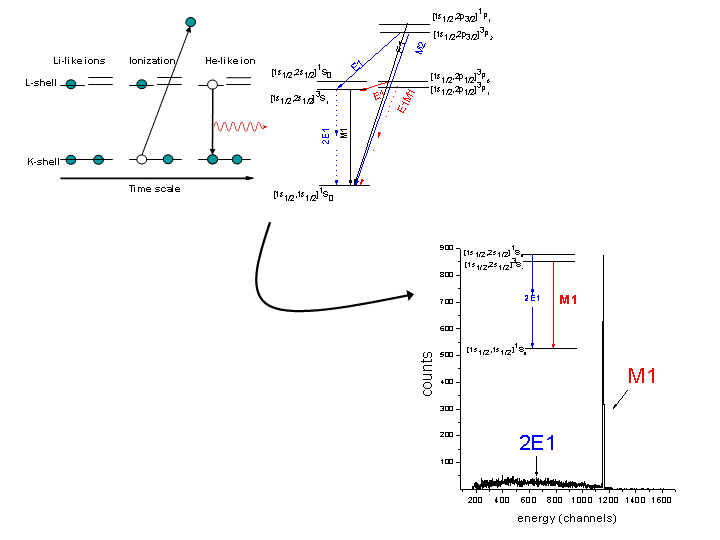Excited States in Few-Electron Heavy Ions
Isolation of s-states in He-like uranium: Two-photon decay
In this study
projectile x-ray emission from relativistic collisions of initially Lithium-like
uranium (U89+) with gas target atoms is measured in coincidence with up-charged
projectiles (ions which lost one electron; U90+). The K-shell ionizarion
occuring in such collisions leads to formation of excited states He-like
ions. Surprisingly, when observing the x-rays from subsequent decays of
these states, only two out of all possibe transitions can be indetified;
namely the M1 decay of the 3S1 and the two-photon (2E1) decay of the 1S0
state. As a consequence, K-shell ionization of high-Z Li-like ions in fast
atomic collisions turned out to be a highly selective mechanism for the
population of the 2S-states in the He-like species, namely the 1s2s[1S0]
and the 1s2s[3S1] state. Besides providing a direct access to two-photon
decay investigations, this mechanism is of importance for selective production
and precision spectroscopy of excited states in high-Z He-like systems
where up to now very few experimental data exist.

